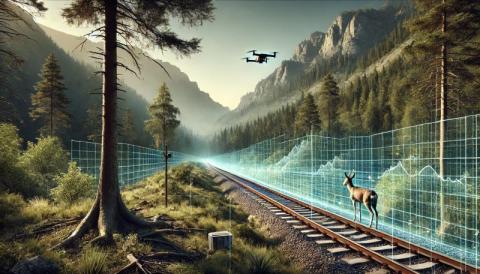Let's start with two principles that are fundamental to us.
- First, the goal is definitely not to replace human expertise and fieldwork with 100% digital technologies.
- Secondly, we advocate for a frugal use of technology and data. The aim is to achieve the desired level of analysis while minimizing the resources used. For example, using dozens of sensors to collect data indiscriminately makes no sense when statistical knowledge allows us to work effectively with only a few.
These priorities set, the digitalization of the sector seems essential if we want to accelerate the preservation of species and ecosystems.
We’ve listed three main advantages that digital solutions offer in the field of biodiversity.
1. Easier access to data at lower cost
This includes, for example, geospatial data (satellite images, drone surveys, etc.) or data collected by ground-based sensors (camera traps, acoustic sensors, weather sensors, etc.).
These data acquisition technologies allow for working at much larger spatial or temporal scales than field surveys, covering territories of all sizes (some of which are inaccessible by ground) and making continuous monitoring of events and changes possible.
Moreover, the variety of data available enhances the accuracy of analyses and the relevance of the results.
2. Automated and accelerated data processing
This can include modeling tools (for example, to predict developments over time and test scenarios), AI-based solutions (notably to identify species from images or sounds), or even digital twins (which combine modeling, AI, and sensors).
These technologies allow for faster (and therefore less costly) and more complex analyses (especially by combining different scales), providing more accurate and detailed results, and reducing biases and risks of errors associated with manual methods.
3. Production of objective results to facilitate decision-making
The development of these data collection and automated processing tools supports the design of standardized methods and indicators, necessary for comparing scenarios, monitoring changes, or evaluating the effectiveness of certain actions over time.
And all of this happens in shorter timeframes than with traditional methods.
